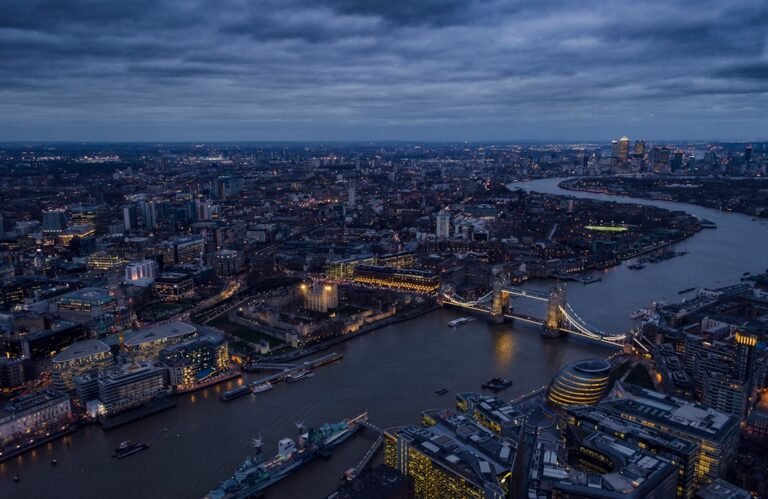How Does Cryotherapy Compare to London’s Historic Turkish Baths?

London has long been a hub for wellness treatments, with a wide range of options available to those seeking relaxation and rejuvenation. Among the most popular treatments in the city are Turkish baths and cryotherapy.
But how does cryotherapy compare to London’s historic Turkish baths?
Turkish baths, also known as hammams, have a rich history dating back centuries and offer a unique and luxurious experience. On the other hand, cryotherapy is a relatively new treatment that involves exposing the body to extremely cold temperatures for therapeutic purposes.
In this article, we will explore the origins and history of Turkish baths in London, delve into the science behind cryotherapy, compare the benefits of both treatments, and discuss their effectiveness for muscle recovery, impact on skin health, costs, psychological effects, accessibility, and availability.
SUMMARY
- London’s Turkish baths have a rich history dating back to the Victorian era.
- Cryotherapy works by exposing the body to extremely cold temperatures for a short time.
- Cryotherapy may offer more benefits for muscle recovery compared to Turkish baths.
- Both cryotherapy and Turkish baths can have positive effects on skin health.
- Cryotherapy tends to be more expensive than Turkish baths but may offer more targeted benefits.
The Origins and History of London’s Turkish Baths
The origins of Turkish baths in London can be traced back to the 19th century when they were introduced to the city by David Urquhart, a Scottish diplomat and writer. Urquhart had experienced Turkish baths during his travels in the Ottoman Empire and was convinced of their health benefits. He opened the first Turkish bath in London in 1860, located on Jermyn Street. The bath was an instant success and soon became a popular destination for those seeking relaxation and rejuvenation.
Over the years, Turkish baths gained popularity in London and several more establishments were opened across the city. These baths were not only places for physical cleansing but also served as social spaces where people could gather, socialize, and relax. The architecture of Turkish baths in London was inspired by the traditional hammams of the Ottoman Empire, with intricate tile work, domed ceilings, and marble interiors.
The Science Behind Cryotherapy: How It Works
Cryotherapy is a treatment that involves exposing the body to extremely cold temperatures for a short period. The most common form of cryotherapy is whole-body cryotherapy, where the body is exposed to temperatures as low as -200 degrees Fahrenheit for a few minutes. This extreme cold triggers a physiological response in the body, leading to various health benefits.
The science behind cryotherapy lies in its ability to activate the body’s natural healing mechanisms.
- When exposed to cold temperatures, the body goes into survival mode and redirects blood flow from the extremities to the core, to protect vital organs.
- This process, known as vasoconstriction, helps reduce inflammation and swelling and can provide pain relief.
- Once the body is removed from the cold environment, blood flow returns to normal and the body releases endorphins, which can improve mood and provide a sense of well-being.
Do you want to learn more about the safety standards that cryotherapy providers need to follow in London? Click here.
The Benefits of Cryotherapy vs. Turkish Baths
When comparing the benefits of cryotherapy and Turkish baths, it is important to note that both treatments offer unique advantages.
- Turkish baths are known for their ability to promote relaxation, improve circulation, and cleanse the skin.
- The steam and heat in the bath help open up pores and remove toxins from the body, leaving the skin feeling refreshed and rejuvenated.
- Additionally, Turkish baths can help relieve muscle tension and promote a sense of well-being.
On the other hand, cryotherapy offers a range of benefits that are not typically associated with Turkish baths.
- The extreme cold temperatures in cryotherapy can help reduce inflammation, relieve pain, and speed up muscle recovery.
- Cryotherapy has also been shown to boost metabolism and increase calorie burn, making it a popular treatment for weight loss and cellulite reduction.
- Furthermore, cryotherapy has been found to improve sleep quality and reduce symptoms of anxiety and depression.
Which Treatment is More Effective for Muscle Recovery?
When it comes to muscle recovery, both cryotherapy and Turkish baths are effective in their own ways. Cryotherapy helps reduce inflammation and swelling in the muscles, which can speed up the recovery process after intense exercise or injury. The cold temperatures also help numb pain receptors, providing temporary relief from muscle soreness. Additionally, cryotherapy promotes the release of endorphins, which can help improve mood and reduce stress, further aiding in muscle recovery.
Turkish baths, on the other hand, offer a different approach to muscle recovery. The heat and steam in the bath helps relax muscles and improve blood circulation, which can aid in the removal of lactic acid and other waste products from the muscles. The bath also provides a soothing environment that can help reduce stress and tension, allowing the body to recover more effectively.
Several studies have been conducted to compare the effectiveness of cryotherapy and Turkish baths for muscle recovery. One study published in the Journal of Strength and Conditioning Research found that cryotherapy was more effective than Turkish baths in reducing muscle soreness and improving muscle function after intense exercise.
However, another study published in the Journal of Sports Medicine and Physical Fitness found that Turkish baths were more effective than cryotherapy in reducing muscle fatigue and improving muscle strength.
Overall, the best treatment for muscle recovery may depend on individual preferences and needs. Some people may find cryotherapy more effective for reducing inflammation and speeding up recovery, while others may prefer the relaxing and soothing effects of Turkish baths.
The Impact of Cryotherapy and Turkish Baths on Skin Health
Both cryotherapy and Turkish baths can have a positive impact on skin health. Turkish baths are known for their ability to cleanse the skin and remove toxins through sweating. The steam and heat in the bath help open up pores, allowing impurities to be released from the skin. This can help improve the overall appearance of the skin, leaving it looking refreshed and rejuvenated.
Cryotherapy, on the other hand, can also have beneficial effects on the skin. The extreme cold temperatures cause blood vessels to constrict, which can help reduce redness and inflammation in the skin.
Additionally, cryotherapy stimulates collagen production, which can improve the elasticity and firmness of the skin. This can help reduce the appearance of fine lines and wrinkles, and promote a more youthful complexion.
Comparing the Costs: Cryotherapy vs. Turkish Baths
When it comes to cost, cryotherapy tends to be more expensive than Turkish baths. The price of a single cryotherapy session can range from £50 to £100, depending on the location and duration of the treatment. Some establishments also offer package deals or memberships that can help reduce the cost per session.
Turkish baths, on the other hand, are generally more affordable. The price of a Turkish bath session in London can range from £20 to £50, depending on the location and additional services included. Some establishments also offer discounts for group bookings or regular customers.
The Role of Temperature in Cryotherapy and Turkish Baths
Temperature plays a crucial role in both cryotherapy and Turkish baths. In cryotherapy, extreme cold temperatures are used to trigger a physiological response in the body, leading to various health benefits. The cold temperatures cause blood vessels to constrict, reducing inflammation and swelling in the body. This can help relieve pain and promote healing.
In Turkish baths, heat is used to create a relaxing and cleansing environment. The steam and heat in the bath help open up pores and promote sweating, which can aid in detoxification and improve circulation. The warm temperatures also help relax muscles and reduce tension in the body.
The Psychological Effects of Cryotherapy vs. Turkish Baths
Both cryotherapy and Turkish baths can have positive psychological effects. Cryotherapy has been found to stimulate the release of endorphins, which are natural mood boosters. This can help reduce symptoms of anxiety and depression, and promote a sense of well-being. Additionally, the extreme cold temperatures in cryotherapy can provide a unique sensory experience that can help distract the mind from negative thoughts and promote relaxation.
Turkish baths, on the other hand, offer a more traditional and soothing experience. The warm temperatures and steam in the bath create a calming environment that can help reduce stress and promote relaxation. The social aspect of Turkish baths, where people can gather and socialize, can also have positive psychological effects by providing a sense of community and connection.
Accessibility and Availability: Cryotherapy vs. Turkish Baths
When it comes to accessibility and availability, cryotherapy tends to be less accessible than Turkish baths. Cryotherapy chambers are not as widely available as Turkish baths and are typically found in specialized wellness centres or spas. Additionally, cryotherapy sessions are often limited to a few minutes due to the extreme cold temperatures, which may not be suitable for everyone.
Turkish baths, on the other hand, are more readily available in London. Several establishments across the city offer Turkish bath services, ranging from traditional hammams to modern spa facilities. Turkish baths are also more accessible in terms of duration, with sessions typically lasting around 1-2 hours.
The Future of Cryotherapy and Turkish Baths in London’s Wellness Scene
The future of cryotherapy and Turkish baths in London’s wellness scene looks promising. As people become more aware of the health benefits of these treatments, demand is likely to increase. Cryotherapy is still a relatively new treatment in London, but its popularity is growing rapidly. More wellness centres and spas are starting to offer cryotherapy services, making it more accessible to the general public.
Turkish baths have a long-standing history in London and are deeply ingrained in the city’s wellness culture. While the number of Turkish baths may not increase significantly in the future, there is still a strong demand for these traditional treatments. As people continue to seek relaxation and rejuvenation in a fast-paced world, Turkish baths will continue to provide a unique and luxurious experience.
In conclusion, both cryotherapy and Turkish baths offer unique and beneficial experiences for those seeking wellness treatments in London. While cryotherapy is a relatively new treatment that relies on extreme cold temperatures, Turkish baths have a long-standing history and provide a traditional and luxurious experience. Both treatments have their own set of benefits and can be effective for muscle recovery, improve skin health, and promote psychological well-being.
The future of cryotherapy and Turkish baths in London’s wellness scene looks promising, with an increasing demand for these treatments as people seek relaxation and rejuvenation in a fast-paced world.
Is There Any Scientific Research on Cryotherapy?
Yes, plenty. CLICK HERE for a vast list of scientific resources related to cryotherapy.






